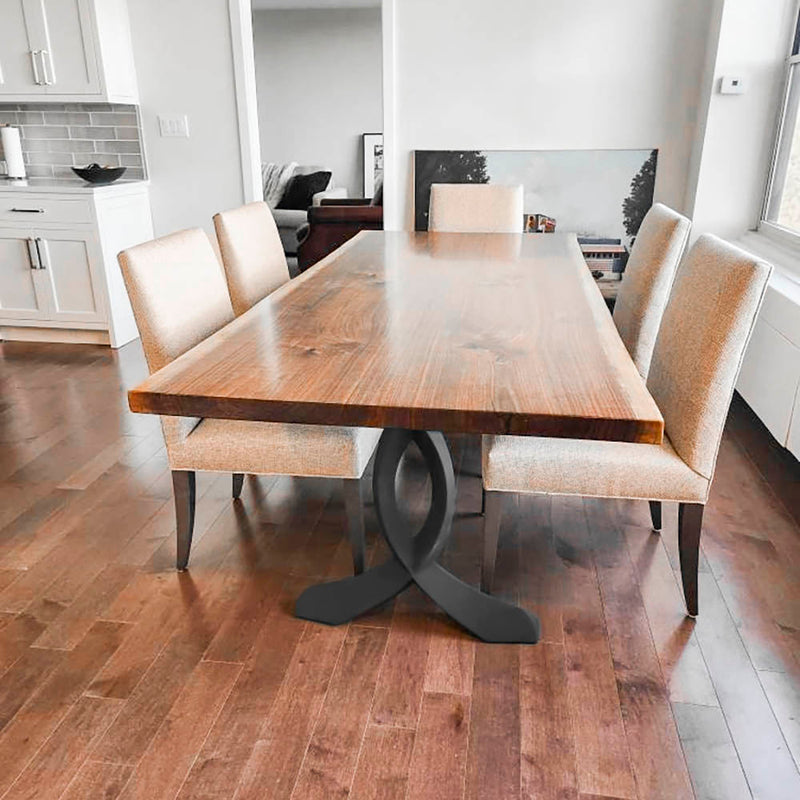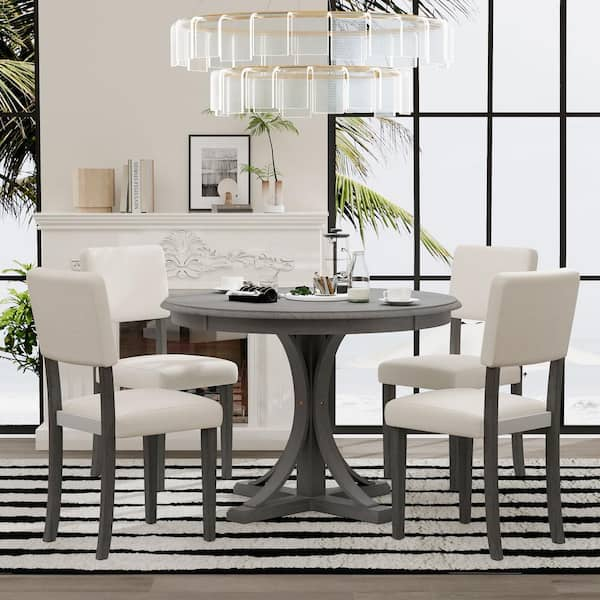From Traditional to Modern: Find the Perfect Dining-room Table Legs for Your Style
The selection of dining-room table legs plays a critical duty in defining the overall character of your area, connecting the gap between conventional craftsmanship and contemporary looks. While traditional designs such as cabriole and turned legs evoke a sense of ageless elegance, modern styles like barrette and geometric choices provide a possibility for striking aesthetic rate of interest. Examining the appropriate equilibrium between these designs calls for a nuanced understanding of your existing decor and personal preference. As you think about these aspects, the question remains: how can you perfectly incorporate these varied leg styles to develop a harmonious eating experience?
Understanding Table Leg Styles
The range of dining-room table leg styles can considerably influence both the aesthetics and performance of the space. Each leg style adds one-of-a-kind functional attributes and visual components, satisfying diverse layout preferences and usage needs. Recognizing these designs is critical for selecting the right dining table that aligns with your overall interior decoration vision.
As an example, tapered legs supply a clean, classic look that can boost an area's beauty, while pedestal bases give stability and optimize legroom, making them optimal for smaller sized areas. Barrette legs, a hallmark of mid-century modern-day style, present an industrial flair, enabling for an airy, open feel. Trestle legs evoke rustic charm, providing durable assistance and a sense of timelessness.
Wood legs can bring heat and texture, whereas steel alternatives usually communicate a smooth, modern ambiance. Inevitably, recognizing table leg designs is vital for developing a cohesive dining area that mirrors individual design while ensuring usefulness and comfort.
Conventional Table Leg Options
When picking dining-room table legs, traditional choices commonly symbolize timeless sophistication and craftsmanship. These designs mirror a rich heritage and a dedication to top quality, making them perfect for those that appreciate classic aesthetic appeals.
Among one of the most iconic traditional leg designs is the cabriole leg, identified by its graceful rounded form. This design typically features attractive carvings and is most frequently discovered in Queen Anne and Chippendale furnishings. Another preferred alternative is the turned leg, which boasts a collection of smooth, rounded shapes that give a classic appearance while maintaining stability.
Additionally, the straight leg, while easy, uses a basic and strong framework that can blend perfectly with a variety of tabletop designs. For those drawn to ornate outlining, claw-and-ball feet legs evoke a feeling of majesty and can act as a sensational prime focus in any type of eating room.
Last but not least, stand bases, although not strictly legs, provide a different typical choice that permits ample legroom and can be perfectly sculpted. Each of these conventional leg designs adds to the overall setting of a dining-room, weding function with visual charm.

Modern Table Leg Designs
Modern table leg designs offer a varied series of designs that highlight clean lines and cutting-edge products. These designs often focus on capability while offering as striking centerpieces within a dining space. Minimalist looks are common, with legs crafted from materials such as metal, glass, Recommended Site and crafted wood, which add to a modern and airy feel.
One popular layout is the barrette leg, identified by its slender, tapered framework that supplies stability without frustrating the table top (dining room table legs). This style is typically located in mid-century modern furnishings and can effortlessly match numerous eating table shapes. Another fad is making use of geometric forms, where legs might tackle angular or asymmetrical forms, adding aesthetic rate of interest and a touch of artistry

Mixing Designs for One-of-a-kind Areas
Typically, why not try here homeowners look for to produce unique eating rooms that show their personal style by blending numerous design components. This technique allows for the unification of diverse visual appeals, resulting in an unified yet unique atmosphere. Coupling a rustic wooden table with sleek, modern-day metal legs can produce an eye-catching comparison that raises the area's overall charm.
Additionally, integrating vintage table legs with contemporary table tops can stimulate a feeling of history while keeping a contemporary sensibility. Such combinations not just showcase private preference yet additionally encourage creative thinking, permitting homeowners to curate a space that feels both personal and welcoming.
Color plays an essential function in this mixing procedure; choosing table legs that complement or contrast with the existing color design can boost aesthetic interest. For instance, whitewashed legs can soften the daring of a dark table surface area, creating a balanced aesthetic.
Tips for Picking the Right Legs
Picking the right table legs is my explanation important for accomplishing both capability and visual charm in your dining space. Begin by thinking about the general design of your area. Traditional settings gain from legs that include detailed makings or turned layouts, while modern rooms may ask for sleek, minimalist styles.
Next, assess the elevation and stability of the legs. dining room table legs. Basic table range in between 28 to 30 inches in height, so make certain the legs match this measurement for convenience. In addition, durable products, such as hardwood or steel, can improve stability and long life
Examine the leg shape too-- options include straight, tapered, or pedestal designs. Straight legs supply a timeless look, while tapered legs can add a touch of elegance. Pedestal bases supply adequate legroom and are excellent for smaller spaces.
Final Thought
In recap, selecting the ideal dining-room table legs calls for careful consideration of both conventional and modern styles. Traditional options such as cabriole and transformed legs supply ageless elegance, while contemporary layouts like hairpin and geometric shapes provide a modern touch. By balancing leg design, elevation, and material with the overall décor, a cohesive and inviting ambience can be attained. Ultimately, the chosen table legs must mirror the wanted aesthetic, boosting the dining experience within the space.
The variety of dining area table leg designs can significantly influence both the aesthetics and performance of the area. Inevitably, comprehending table leg styles is important for developing a natural dining location that shows individual style while guaranteeing practicality and convenience.One of the most famous typical leg designs is the cabriole leg, characterized by its elegant bent shape. Straight legs supply a timeless look, while conical legs can add a touch of style.In summary, selecting the perfect eating room table legs needs careful consideration of both standard and modern-day styles.
Comments on “Affordable and High-Quality Dining Room Table Legs for Every Budget”